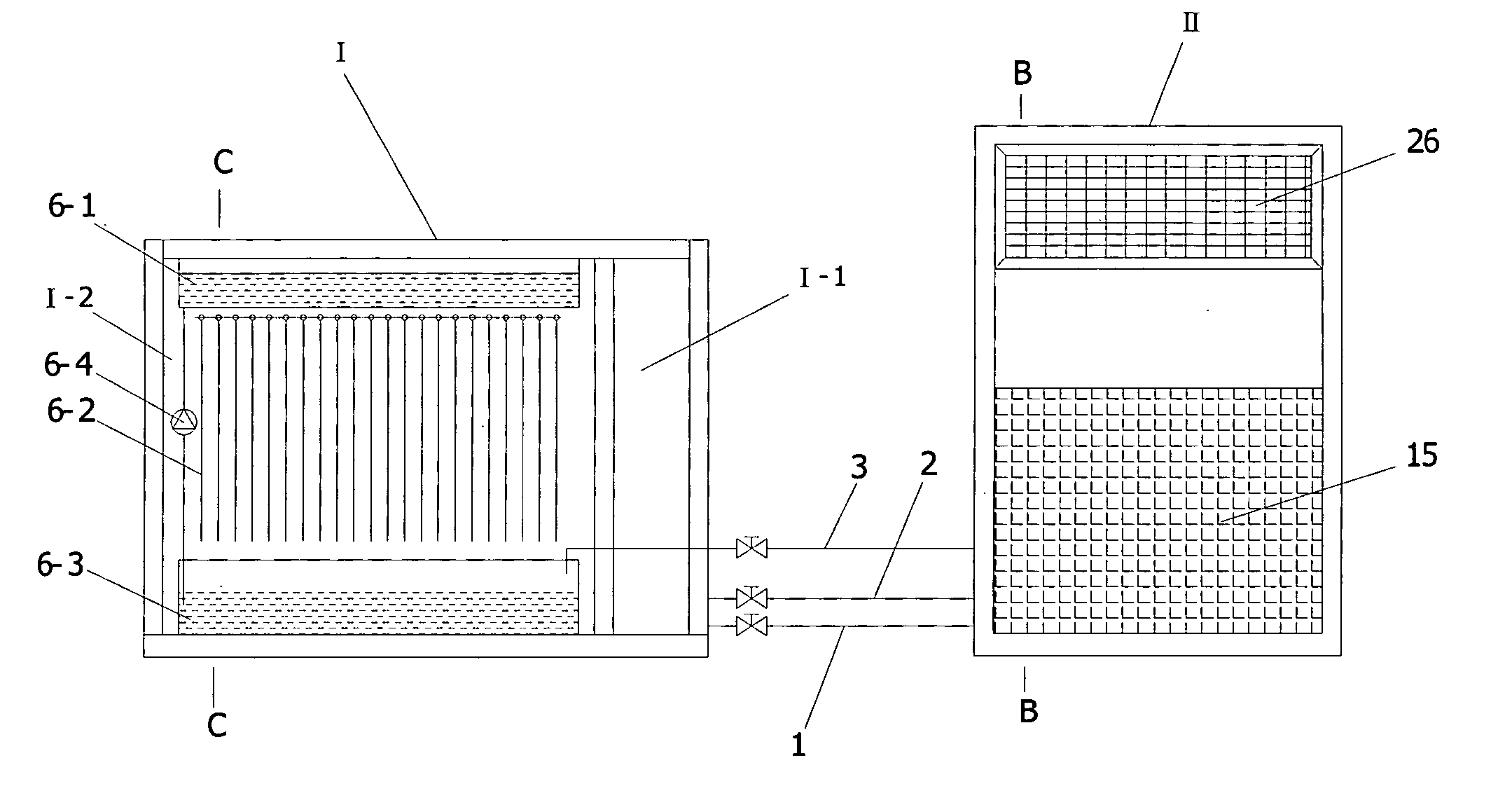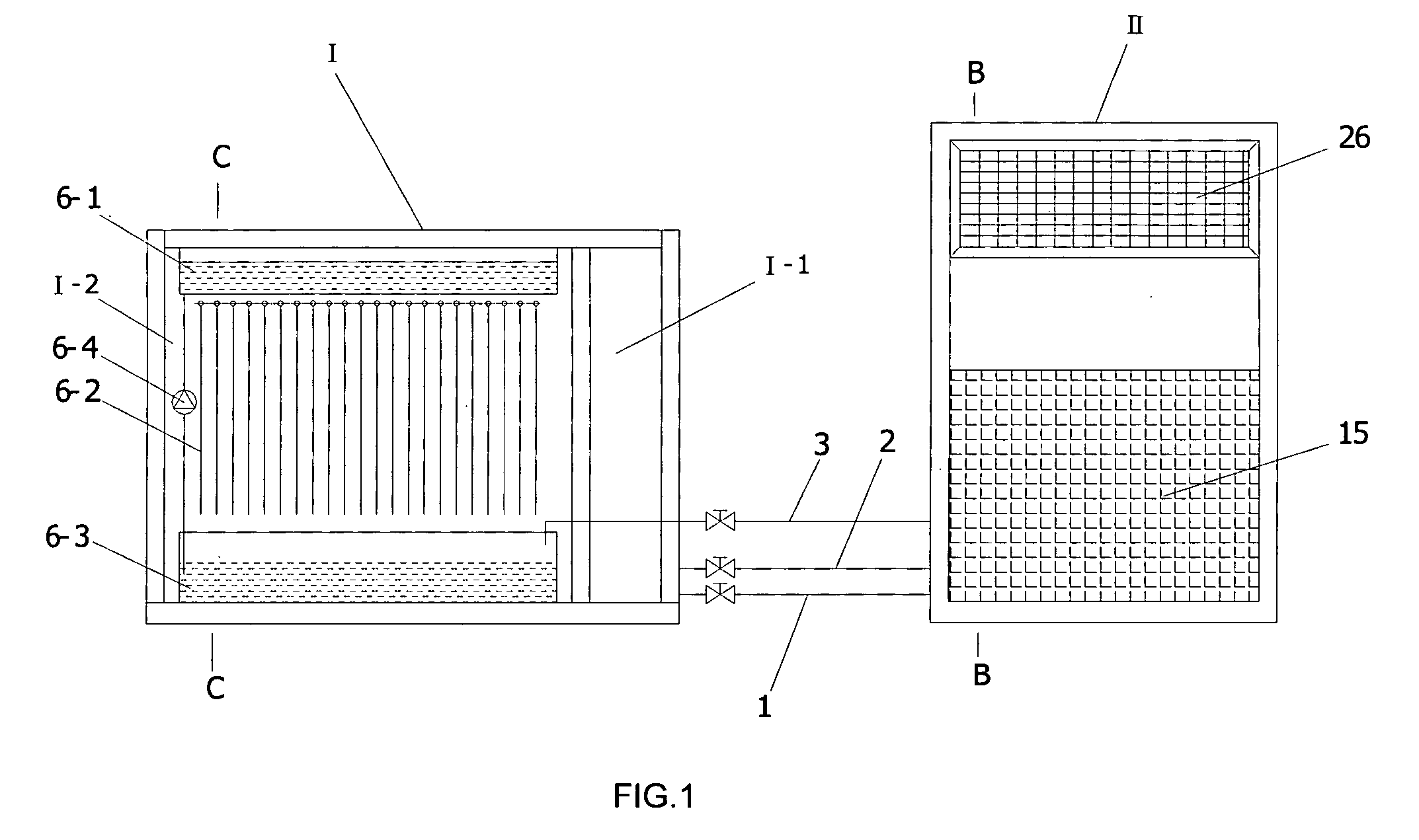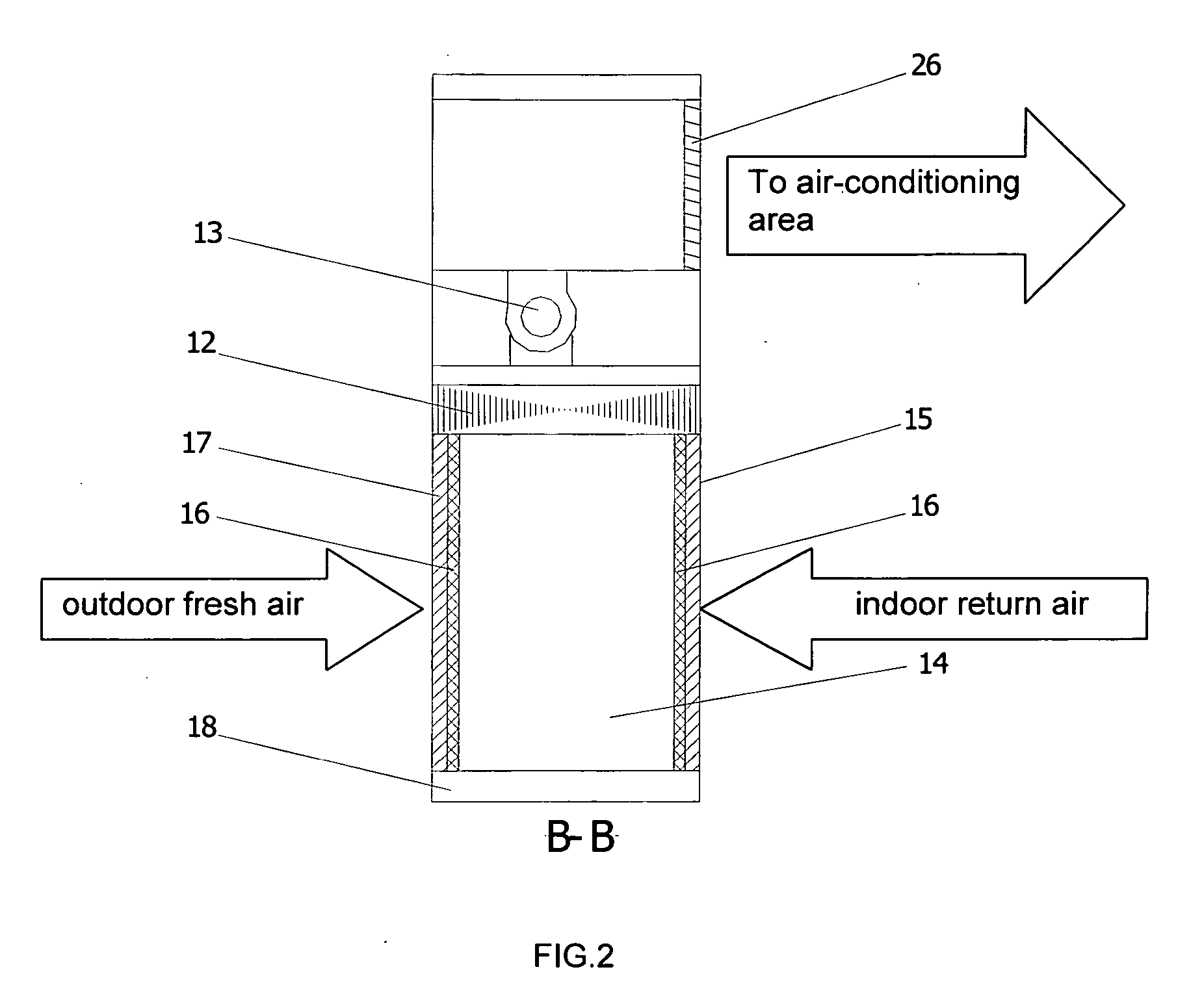Air-conditioning system with full heat recovery
a technology of air-conditioning system and heat recovery, which is applied in the direction of domestic cooling apparatus, lighting and heating apparatus, heating types, etc., can solve the problems of increasing the popularity of air-conditioners, and affecting the efficiency of air-conditioning systems. , to achieve the effect of reducing the overall temperature of the condensa
- Summary
- Abstract
- Description
- Claims
- Application Information
AI Technical Summary
Benefits of technology
Problems solved by technology
Method used
Image
Examples
Embodiment Construction
[0048] The present invention is further described by the following embodiments with the accompanying drawings, but the embodiments should not be regarded as limiting.
[0049] FIGS. 1 to 4 show the structure of the present invention. The present air-conditioning system with full heat recovery is of a split-type structure with a main unit (outdoor unit) I which cools a terminal (indoor unit) II. As illustrated in FIG. 1, the main unit I and the terminal II are connected through a liquid supply pipe 1, a return air pipe 2 and a condensate recycling pipe 3. FIG. 4 shows the operation of this embodiment. A compressor 4, a one-way valve 5, an evaporative condenser 6, a liquid storage member 7, a drier-filter 8, a liquid mirror 9, a liquid supply electromagnetic valve 10, an expansion valve 11 and a finned evaporator 12 are sequentially connected to form a closed refrigeration circuit, and a coolant (chlorofluorocarbon) flows in the refrigeration circuit to perform refrigeration, wherein th...
PUM
 Login to View More
Login to View More Abstract
Description
Claims
Application Information
 Login to View More
Login to View More - R&D
- Intellectual Property
- Life Sciences
- Materials
- Tech Scout
- Unparalleled Data Quality
- Higher Quality Content
- 60% Fewer Hallucinations
Browse by: Latest US Patents, China's latest patents, Technical Efficacy Thesaurus, Application Domain, Technology Topic, Popular Technical Reports.
© 2025 PatSnap. All rights reserved.Legal|Privacy policy|Modern Slavery Act Transparency Statement|Sitemap|About US| Contact US: help@patsnap.com



